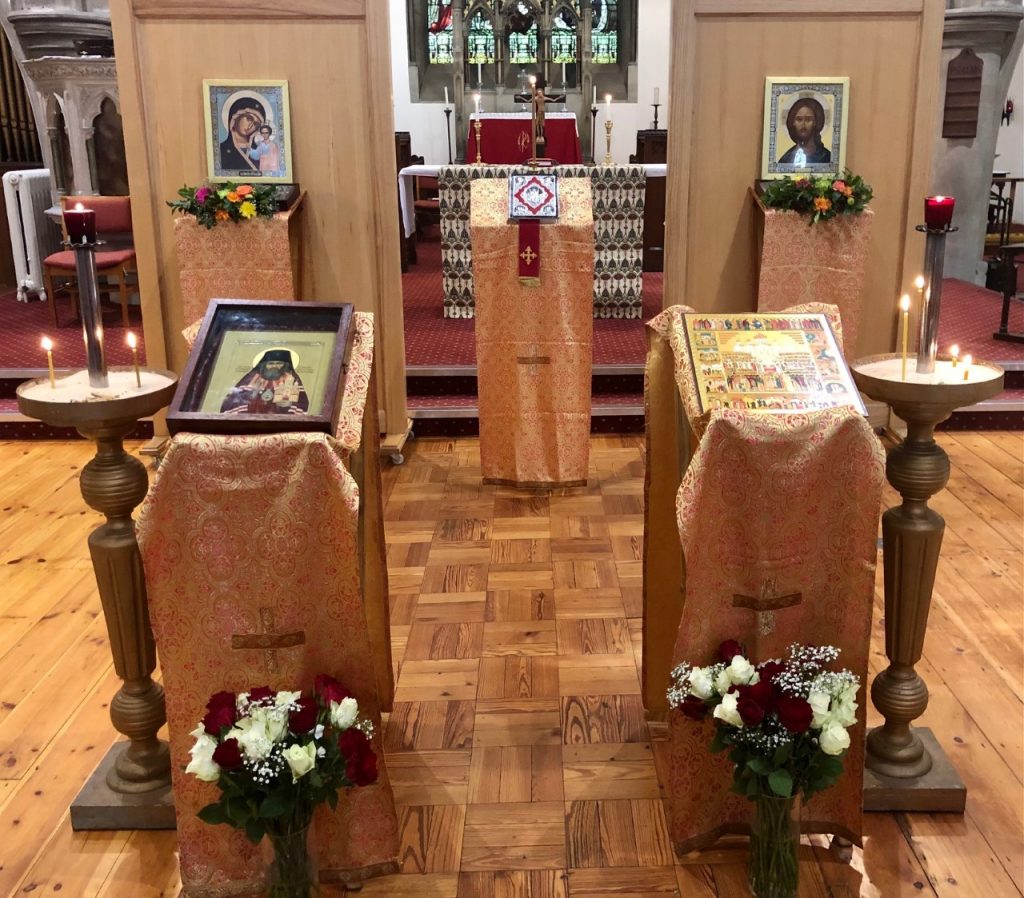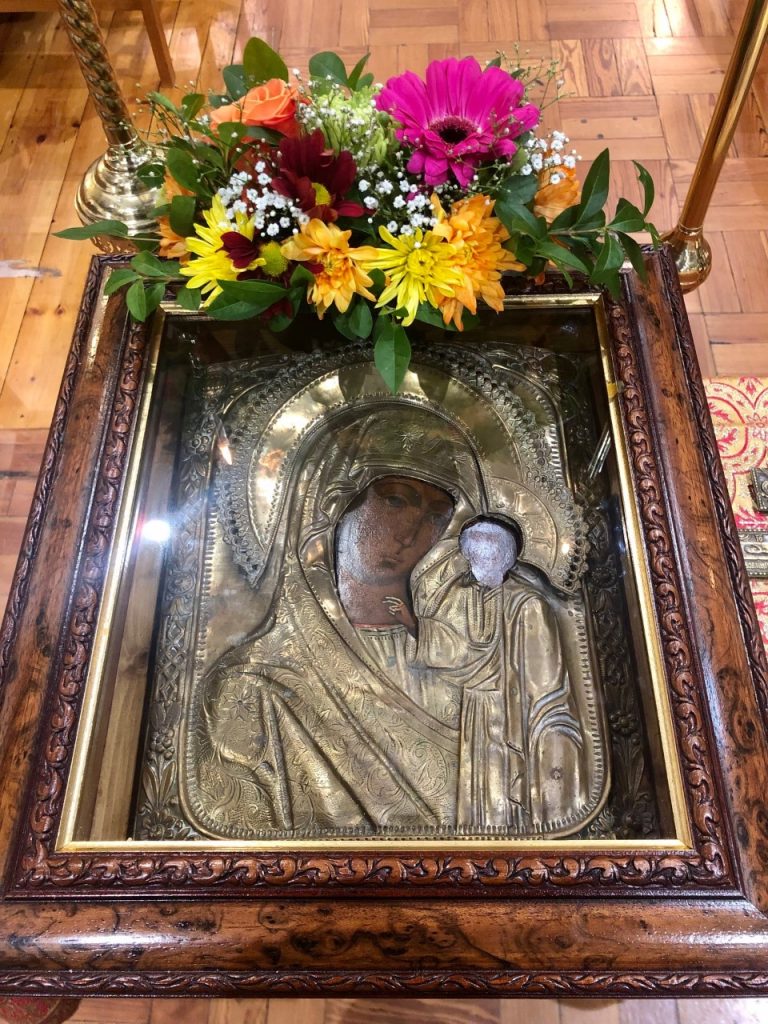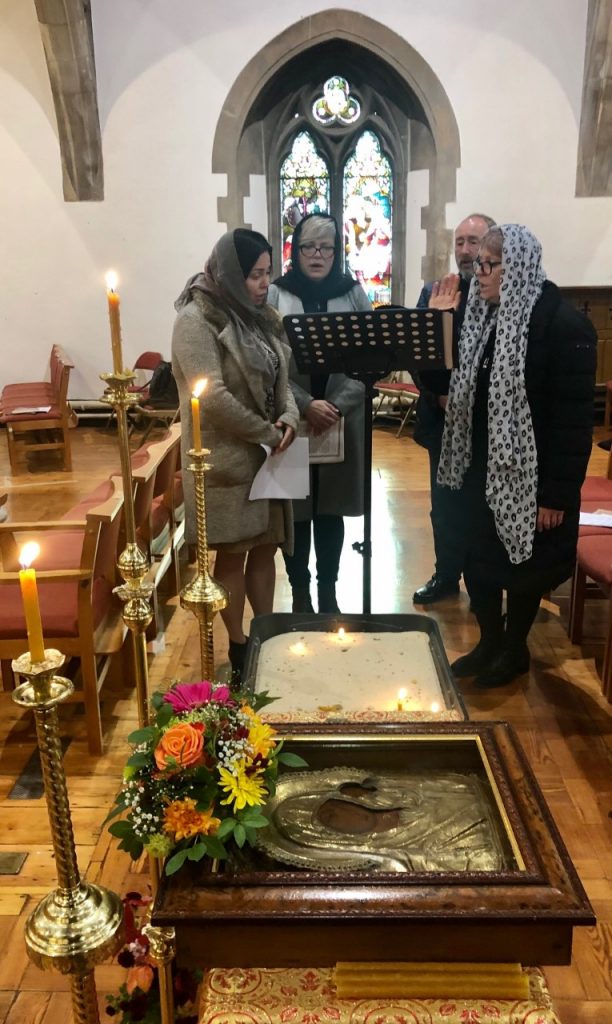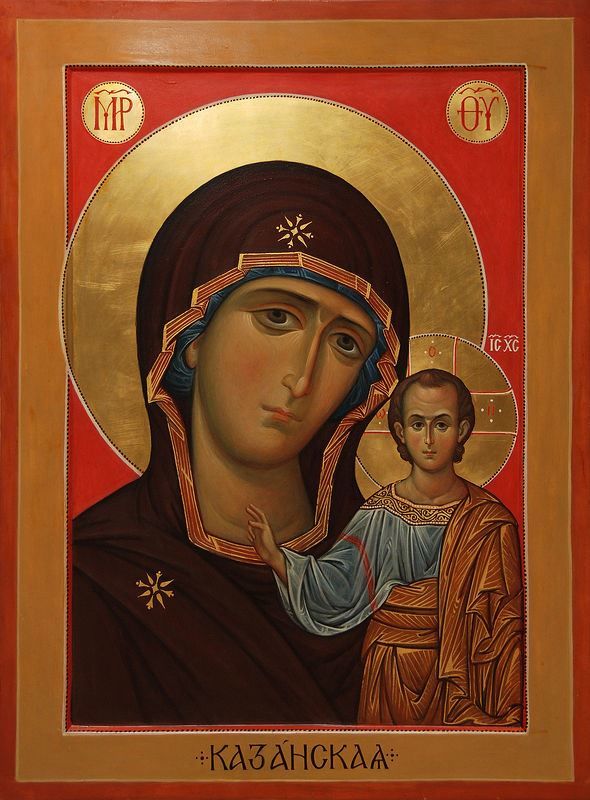
Dear brothers and sisters,
Greetings to you all, as we celebrate our altar-feast.
On this Autumn feast of the Kazan Icon, we remember how the intercessions of the Mother of God and the protection of her grace-filled wonderworking icon delivered Orthodox Muscovy from the invasion of the Poles.
In the Time of the Troubles, following the end of the rule of the House of Rurik, Russia was tormented by pretenders to the throne, by struggles between the boyars and different layers of society, and by division and civil strife.
In the words of Avraamy Palitsyn, the cellarer at the Trinity St Sergius Lavra:“In the general whirling of heads, everyone wanted to be above his station: servants wanted to be masters, the rabble wanted to be gentry, the gentry wanted to be nobles… The Fatherland and Church perished: the temples of the True God were ruined… cattle and hounds lived in the altars; … dice was played on the icons; … harlots danced in clerical robes. Monks and priests were burned by fire…”
… and into this chaos came the invader and aggressor, seeking to exploit the weaknesses, divisions and fracture-lines of society and state, to occupy, seize and despoil.
Indeed, the Poles occupied Moscow, imprisoning the Holy Hieromartyr, Patriarch Germogen, who perished from the privations and misery in which he lived. Yet from his cell, the Holy Hierarch was able to call the Orthodox people to prayer and repentance, to fasting and supplication, to beg the help of the Queen of Heaven.
From prison, he called for a three-day fast and ordered the wonderworking Kazan icon to be brought to Kuzma Minin and Prince Pozharsky, who led the resistance to the Polish occupation, and the sacred-treasure was borne before the regiments who fought to regain the capital from the Poles, who were driven from Moscow on October 22, 1612 (November 4 on the Civil Calendar) – since kept as the autumn feast of the Kazan Icon of the Mother of God.
![]()
Turning aside from armies and regiments, warfare and battles, let us focus on the spiritual call of the Holy Hieromartyr – to fast, to pray, to labour spiritually for the overcoming of violence, division and strife, by turning to the Mother of God as our fervent intercessor.
In our 21stcentury world, there are so many temptations to distract us from this spiritual-labour and spiritual-resistance to the violence and evils of the world, forgetting that our first reactions need to be spiritual and rooted in prayer.
Today, so many Orthodox people rush to the internet, to social media and forums, commenting, critiquing and fanning the flames of discord and division, absorbing news, facts and figures, rather than doing precisely what St Germogen ordered: to fast, to pray, to weep, to asceticism/podvig, making prostrations and turning to the Mother of God as the Champion Leader, and pleading for our suffering world!
How many more hours do so many self-proclaimed Orthodox prophets and activists spend before computer screens than in fervent prayer in their icon-corners?
How many more times are hands raised to tweet, type and comment, rather than to make the sign of the Cross whilst praying for the peace from above, for the unity of all and for the salvation of our souls?
How many more hours are spent being gripped by the heat of the passions, as hours of news soaks into the psyche, rather than in burning prayer for the softening of evil hearts, the breakthrough of God’s love and the repentance of fallen humanity and the world?
None of this is to deny the tragedies of the present time, or indeed injustices, acts of violence and atrocity, but we must instinctively turn to God and His saints for answers and solutions.
This feast should prompt us not to run to Twitter, Facebook, internet chat groups, on-line forums and 24 hour news as a first, knee-jerk reaction to the ills and tragedies of the world, but rather to prayerfully flee to the Mother of God, spoken of in the kontakion of the feast as “ that calm and good haven, the speedy helper and ready and fervent salvation.”
We place our hope in her as the mother given to all of humanity as she stood at the foot of the Cross, knowing that it is only by prayer, repentance and turning to God that the divisions of humanity can truly be healed, as we pray “help us all who, amid temptations, sorrows and sickness, are heavy laden with many sins, who stand before thee and with tears pray to thee with compunctionate soul and contrite heart… and who have unfailing hope in thee…”
Let us turn to the Mother of God with such heart-felt compunction, hope and contrition, knowing that the first stirrings of a changed and transfigured world begin within the deepest recesses of our own hearts.
It is from hearts filled with the love of God, striving to love neighbour and stranger, friend and even enemy, that peace will transform the world, and on this feast, we turn to the Mother of God not only as the ‘Champion Leader’, but also as the ‘Queen of Peace.’
Most Holy Lady, Mother of God, save us!
In Christ – Fr Mark




